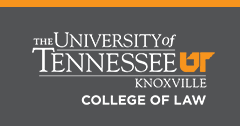Abstract
All intentional torts are governed by three basic principles: (1) intent is a necessary and sufficient basis for holding someone liable; (2) each intentional tort must violate its own specific behavioral rule; and (3) all intentional torts require proof of the defendant's fault. Together, these principles appear to make intentional tort law both unique and self-contained. The first principle justifies creating an intentional tort theory of recovery. The second principle distinguishes that theory from negligence, which bases liability on the fixed standard of reasonable care. The third principle separates intentional torts from the no-fault theory of strict liability.
Of course, this jurisprudential scheme has never been as perfect as it sounds. Like any classification system, it contains some obvious anomalies. For example, the concept of tortious intent, defined as scienter, includes behavior which is clearly not purposeful. In addition, the doctrine of transferred intent creates a legal fiction that artificially shifts intent from one person to another. More discretely, the mistake doctrine imputes intent to persons whose conduct clearly is unintentional.
Until now, these anomalies have been viewed as rather trivial blemishes on an otherwise healthy corpusjuris. In this article, however, I intend to show that the flaws in intentional tort law are far greater in number, and far more serious, than previously imagined. Indeed, they are so numerous and substantial, they actually undercut each of the law's three sustaining tenets.
The truth, I shall argue, is that intent is never a sufficient basis for imposing liability. Instead, liability is always based on the "negligence" concept of reasonableness. Since unreasonableness is presumed from intent, proof of fault is never required. Rather, all intentional torts actually impose a form of strict liability.
Unlike the anomalies mentioned above, these observations cannot be casually dismissed; in fact, they could hardly be more important or timely. Obviously, all jurisprudential regimes are expected to be both accurate and comprehensible. However, the expectations for intentional tort jurisprudence are even higher. Intentional torts represent one-third of tort law's theoretical paradigm. They are both defined by and distinguished from their theoretical counterparts, negligence and strict liability. Thus, if intentional tort jurisprudence contains any serious conceptual flaws, they could not be easily isolated or neatly cabined from the whole. Instead, they would threaten tort law's entire supporting structure.
Today that structure is under review. In its mission to restate tort law, the American Law Institute currently is reconsidering all of the law's basic principles, including those contained in the jurisprudence of intentional torts.4 Thus, if something is fundamentally wrong with that jurisprudence, now would be the time to fix it. In fact, if the flaws run as deep as I suspect, the time would be ripe to shift the law toward a new theoretical paradigm.
In the remainder of this article, I will show how the many anomalies in intentional tort law create the need for such a shift, and will suggest at least one option for change. I will begin, in Part II, by examining the current theoretical paradigm of tort law. This paradigm defines the avowed interrelationship among intentional tort theory and the theories of negligence and strict liability. In the next three parts, I will show how these theoretical distinctions break down in practice. Specifically, Part III demonstrates the misfit between intentional tort theory and the cases falling both within and beyond its reach. Part IV then reveals the overlap between intentional tort theory and the theory of negligence. To round out this discussion, Part V uncovers the remarkable and ironic affinities between intentional torts and strict liability. Finally, in the Conclusion and Proposal, I offer a new theoretical paradigm based on the concept of reasonableness which not only captures the spirit of intentional tort law, but also eliminates its most enervating anomalies.
Recommended Citation
Calnan, Alan
(2005)
"Anomalies in Intentional Tort Law,"
Tennessee Journal of Law and Policy: Vol. 1
:
Iss.
2
, Article 3.
Available at:
https://trace.tennessee.edu/tjlp/vol1/iss2/3
